North Vietnam, National Defense Exercise Games, October, 1964, Michel Nr. 330-333; Four stamps in the nominals of 5 xu and 12 xu (three stamps) were released perforated 11.0.
Mint set in blocks of four:
The set was not released im-perfroated but a handful of im-perforated phase prints have come to market. Very rare.
- Print Phase
3. Print Phase (Finished product but im-perforated).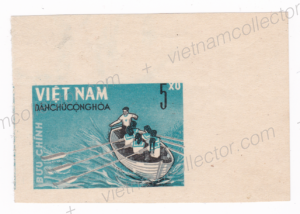
Here is a true piece of history. It is a combat cover (sometimes also referred as a bullet-hole cover) that was taken by either an ARV or an American soldier after wounding or killing a North Vietnamese mail man. Each side in the conflict was trying to gain an advantage by securing intelligence from the enemy so mail personell were a valuable target. It was a requirement that all mail taken in combat was to be handed over to the intelligence branch for translation and analysis which makes this type of mail so rare these days. So, most of these covers ended up in the files of the CIA or were destroyed after analysis. It was illegal to retain them, especially the letters inside, but some service men nevertheless kept some envelopes as war trophies. This cover clearly shows the marks of bullet holes or shrapnel damage that was inflicted in the fight. The letter was sent from Phu Tho and addressed to a member of the military as indicated by the Hom Thu Nr. on front. The envelope is a typical adversity cover that was fashioned out of old note paper. The envelope was intercepted prior to reaching the post office as there is no cancellation yet. It contains a letter that, when folded, lines up perfectly with the bullet holes. In it a sister writes to her elder brother that Hanoi has achieved great successes in shooting down 35 American war planes and capturing 3 American pilots. She will try very hard to achieve a good school degree so that she can be allowed to become a member of the (Communist) party. She confirms to have received 5 letters from her brother and writes that she has sent him 8 letters. On the reverse the envelope contains the slogan: The youth of Phu Tho vows not to return to home until the American enemies are defeated. The letter dates the cover to November, 1967. Very rare!
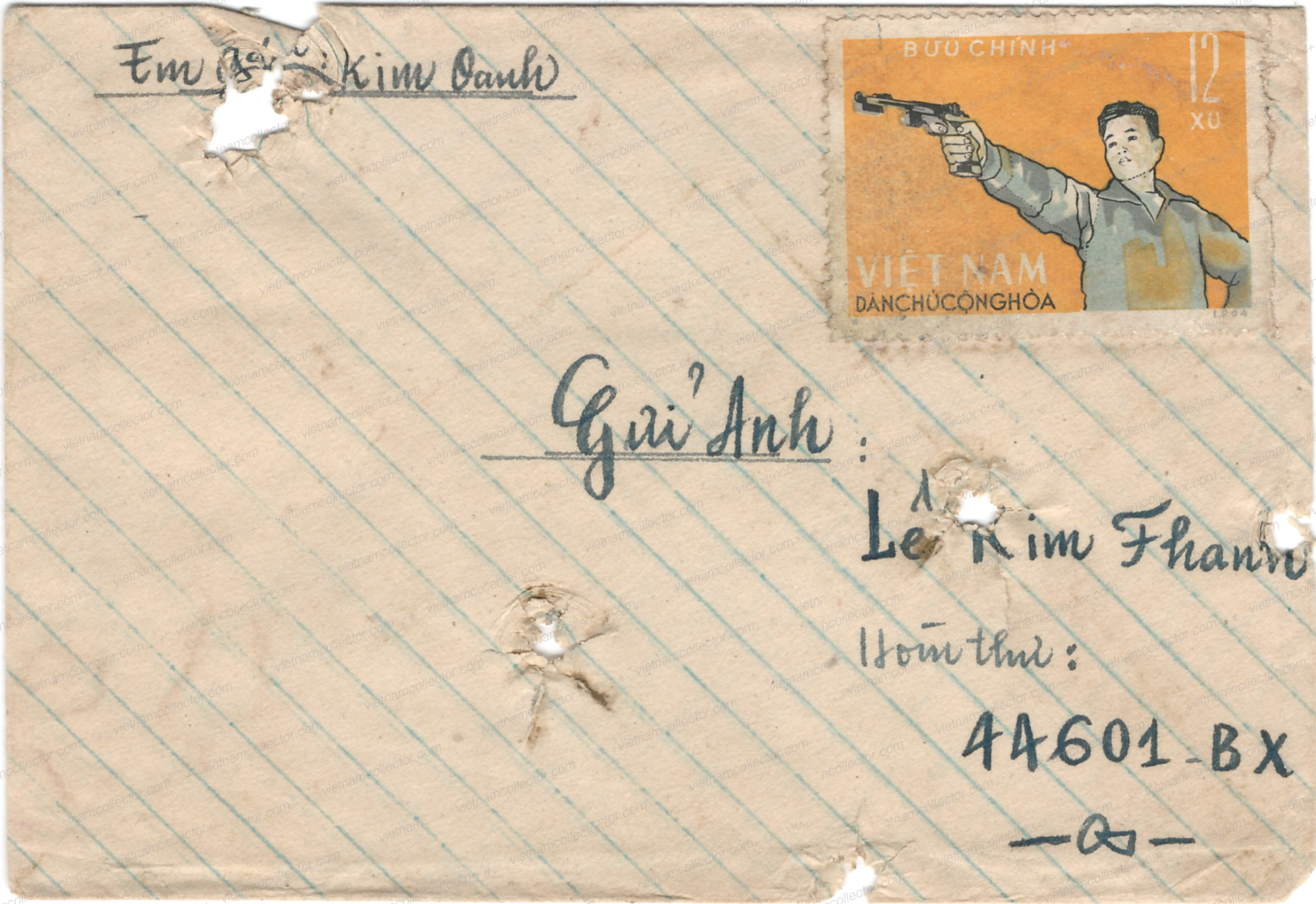
Letter sent on the First Day of Issuance to Klewitz in West Germany featuring the entire set. The letter had an overall franking of 59 xu which was slightly in excess of thee required postage of 50 xu.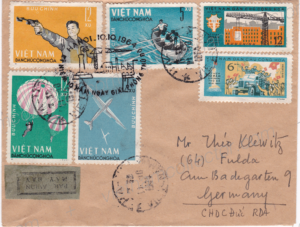
Rare multiple franking of the yellow 12xu value paying an overall postage of 60xu on an international air mail letter sent in September of 1965 from Hanoi to an Austrian Transport Insurance Society.
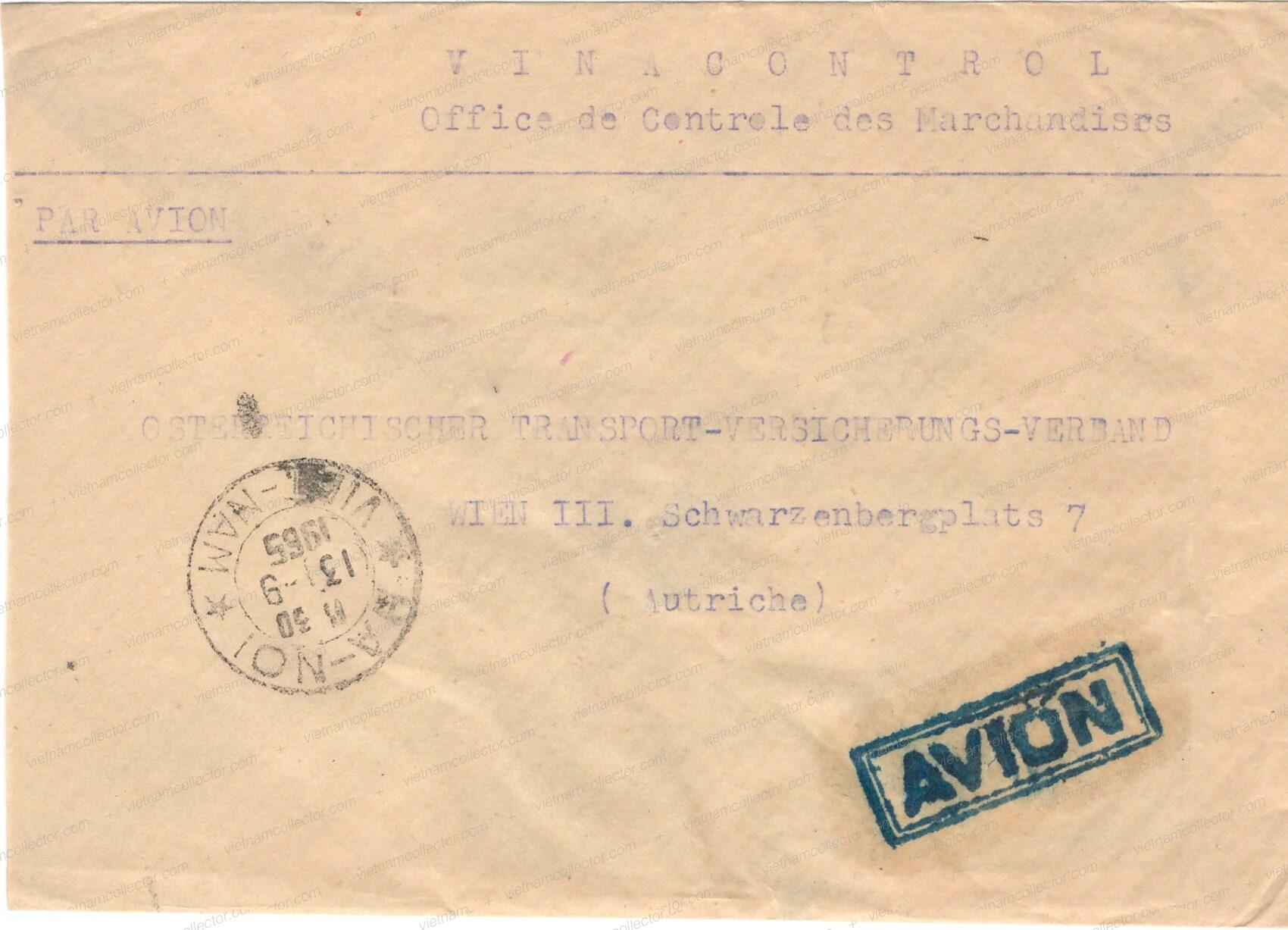
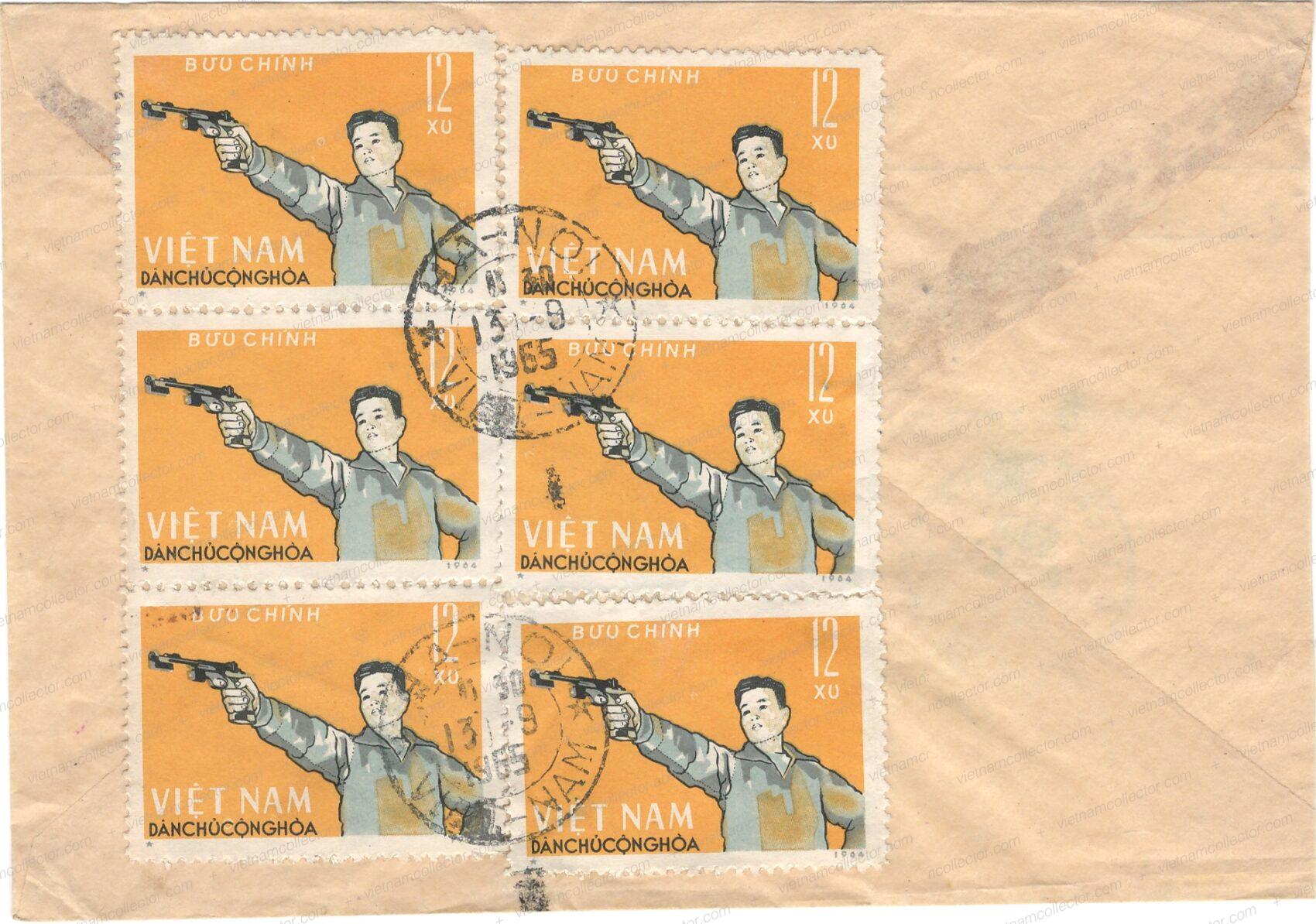
Rare single franking of the green 12xu stamp on a patriotic envelope sent to a fellow Vietnamese in Poland. The stamp is cancelled with a very unusual semi-mute cancel that shows no date. Given the Vietnamese Army decal on the envelope and the lack of sender address suggests that this was a military letter which probably precipitated the social cancel. Warsaw arrival cancel on the reverse.
Another rare single franking of the green 12 xu stamp this time civilian use on a letter to Czechoslovakia.
Mixed franking of the 20xu Nguyen Du stamp plus one of the 5xu Sport stamp for an overall postage of 25xu. The letter was most likely of the second weight level as the standard rate for up to 20g amounted to only 12xu.
Mixed franking of the 50xu value together with the 5xu Sport Games stamp for an overall postage of 55xu on an air-mail letter (full content preserved) sent to East Germany . Note that the Hai Phong cancel is missing the year date line.
Mixed franking of the orange 12xu stamp with other NVN stamps (including the 5xu Sport Games stamp) for an overall postage of 30xu to Congo, Africa. Congo was an extremely rare destination at the time.
Very rare letter featuring the entire im-perforated set on a registered letter with other NVN stamps (including the 5xu Sport Games stamp) addressed to Gregor Schwirtz, well know East German philatelist in October of 1968 for an overall postage of 1.02D. Im-perforated stamps on postally used covers are very rare. The standard registered letter to East Germany cost 72xu (12xu postage plus 60xu registration fee) so this letter must have been heavier than the standard 20g.
Very rare registered express mail letter featuring the 5 xu stamp sent to Klewitz in October of 1970. It also features im-perforated pairs of the 20 xu and 30 xu flower series from 1962. Im-perforated stamps on postally used cover are very rare. The overall postage amounted to 1.68 Dong which was just a tad above the required tariff of 1.60 Dong for a 20 gram registered express mail letter to West Germany. Fulda arrival cancel on the reverse.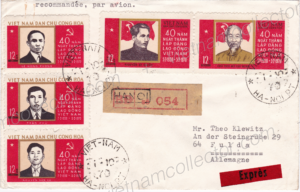
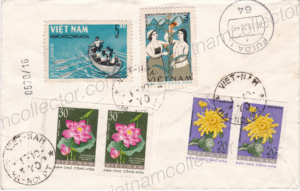
Mixed currency franking from June of 1967 using two of the old 150D Handicraft stamps (which were devalued by 1,000:1 on March 1st, 1959 and hence only worth 30xu) plus newer currency stamps for 22xu (including a pair of the 5xu Sports stamps) for an overall postage of 52xu. This was more than the standard 20g tariff demanded (12xu) so this letter must have been much heavier.
Mixed franking of the 20 xu and 50 xu Fruit stamps plus the 5 xu Army Games stamp paying an overall postage of 75 xu on an international air mail letter sent from Hai Phong to Switzerland (full contents preserved) sent in February of 1970.
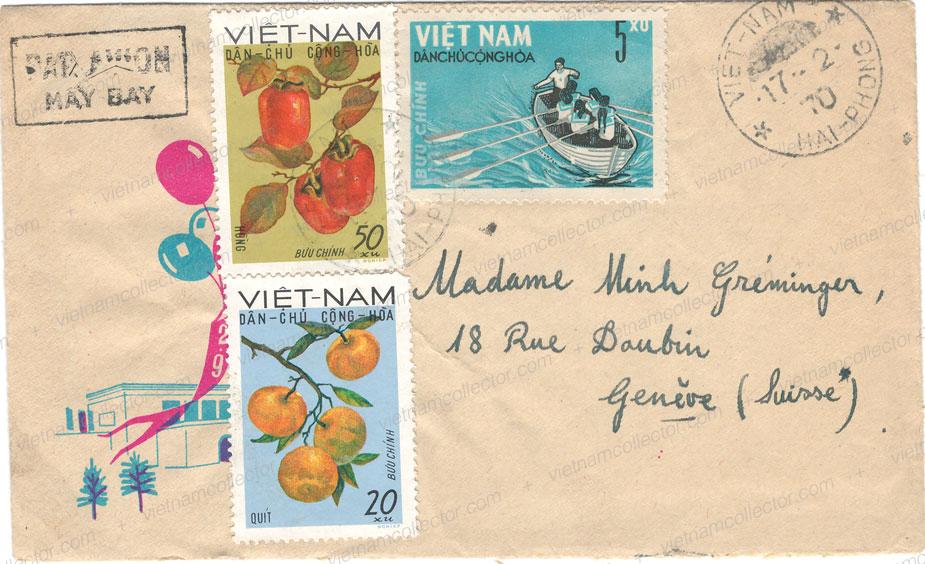
Rare single franking of one of the 12xu values on a letter to East Germany.
Registered letter sent from Quan 5 (Cholon) to Klewitz in December of 1981. The letter carries a wide variety of the Lotus stamp (pair in Perf. 9.5 on yellowish paper, pair in 9.5 on white paper, pair im-perforated on yellowish paper, single stamp im-perforated on white paper, pair Perf. 5-6, pairs Perf 11 on yellowish and white paper, pairs Perf. 14 and 15 on white paper and a pair Perf. 14 on yellowish paper). Post master perforations and im-perfroated stamps on postally used cover are ver rare. 12 xu National Defense stamp on the reverse. The overall postage (including the free frank for 4.5 Dong) amounted to 7.87 Dong.
Mixed franking of the 6xu October Revolution stamp with one 12xu Sport Games stamp for an overall postage of 18xu. The envelope was left open on purpose probably for postal inspection. So this unusual postage probably represented the printed matter tariff.
Registration Nr. 100960

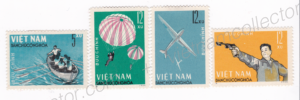
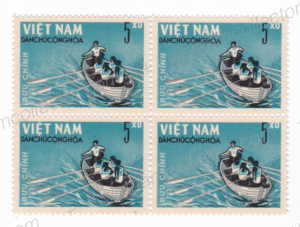
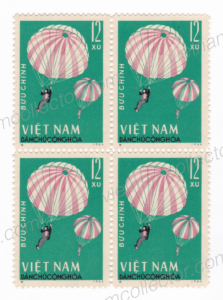
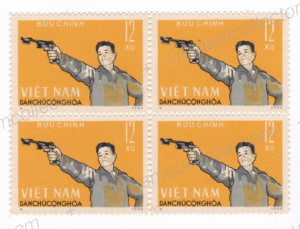
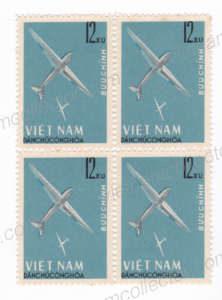
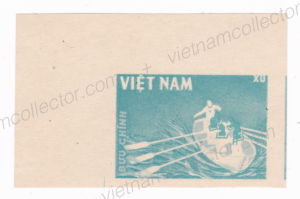
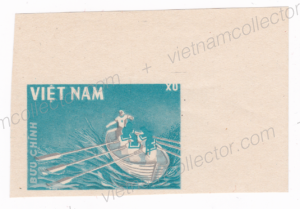
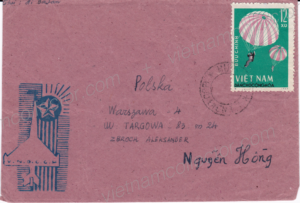
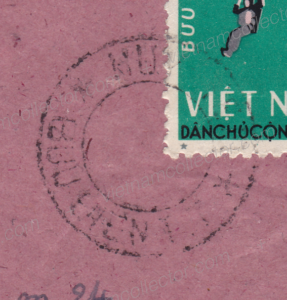
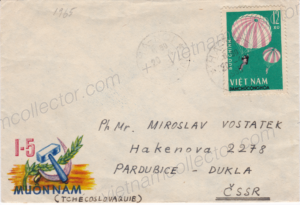
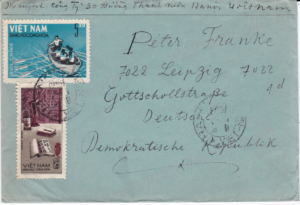
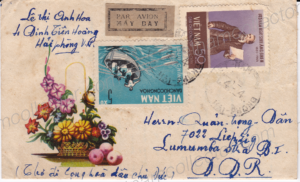
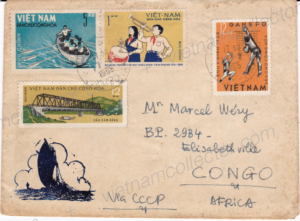
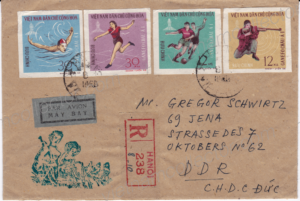
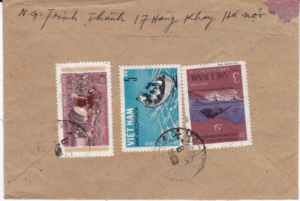
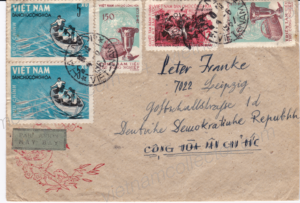
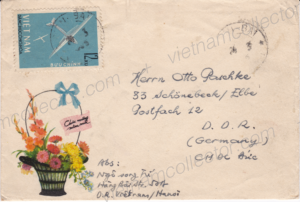
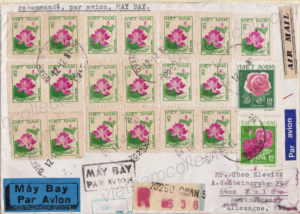

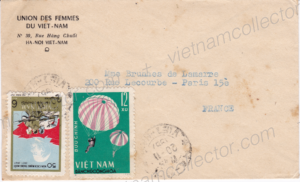
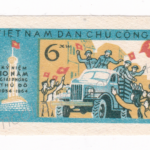
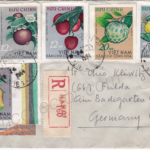


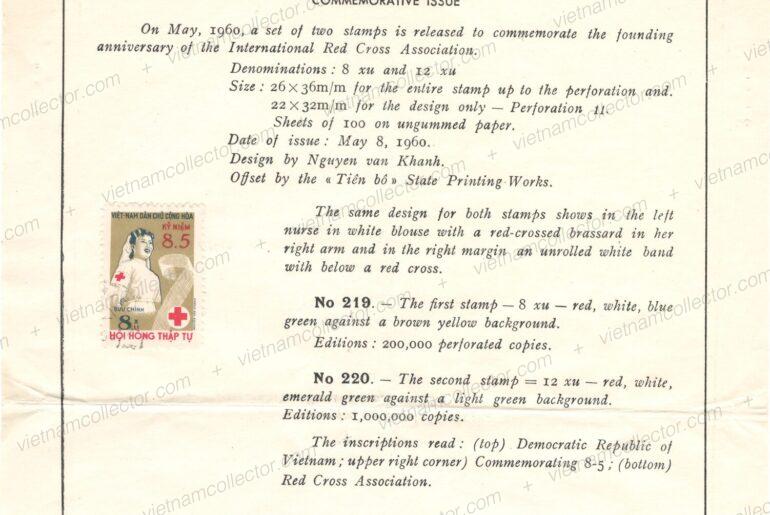
Comments are closed.